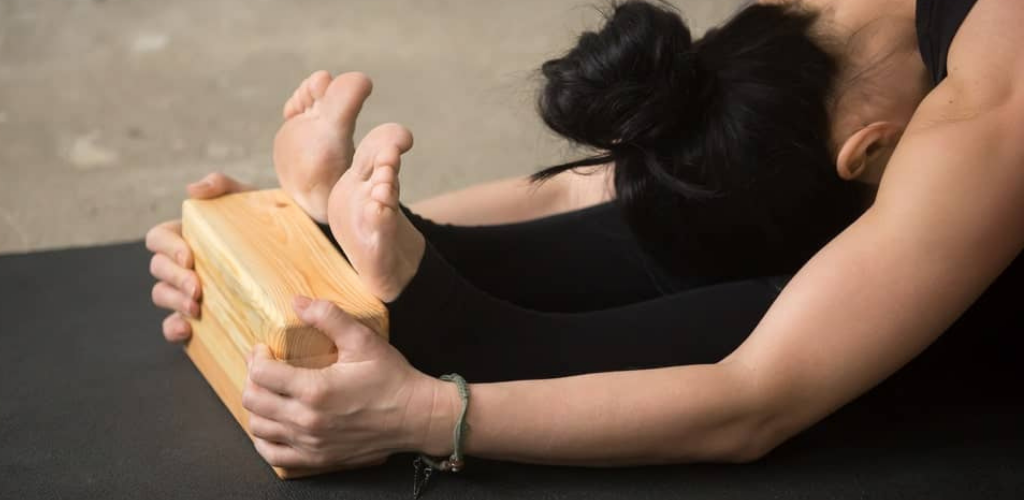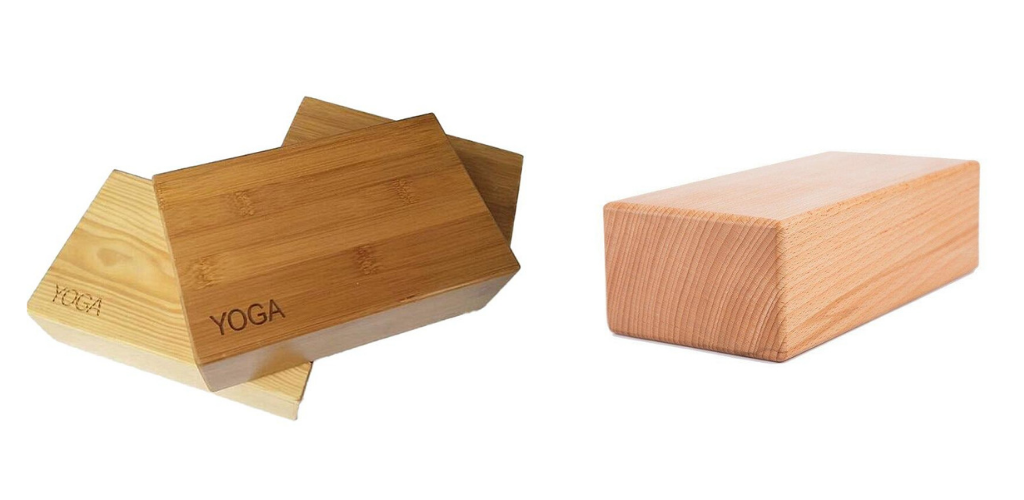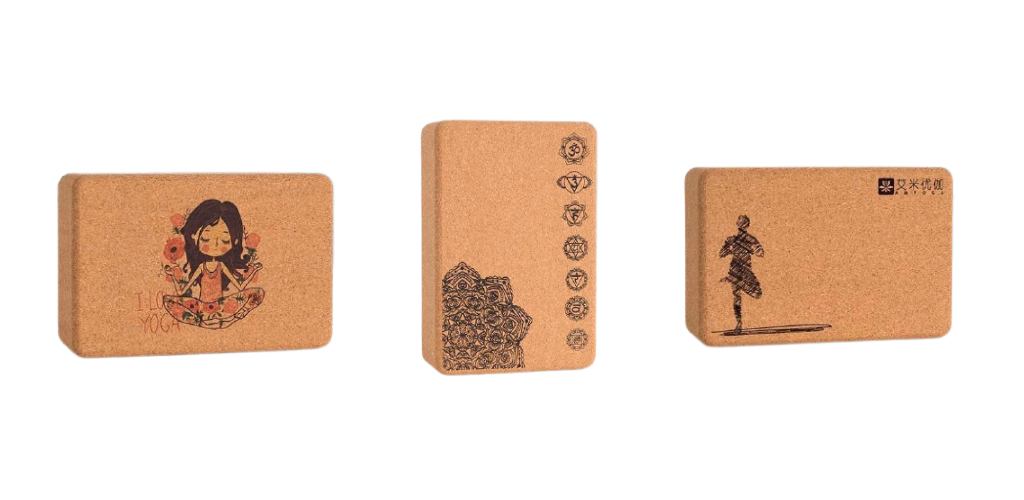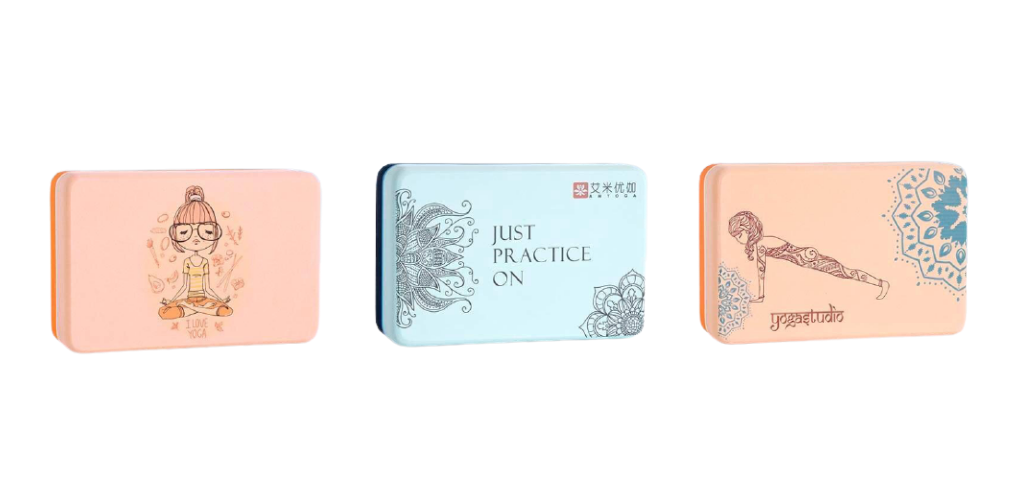
How to choose a Yoga Block?
If you're just starting out, or if you're a slightly more experienced yogi but can't seem to improve your flexibility or strength, you're probably not making enough use of a very important tool: the yoga block.
The yoga props were popularized by B.K.S. Iyengar as tools for supporting the body to enable better alignment during certain yoga postures. The yoga block or yoga block is one of the most popular and widely used yoga accessories in a yoga class.
Yoga blocks are most often used as a hand extension, but they are also used to support the back, head and hips, and to improve the alignment of your asanas. Most yoga studios provide blocks, but you can also buy your own. It's more hygienic to have your own yoga blocks than to borrow them, and you can also use them when practising yoga at home.
Before you buy a yoga block, you need to have some information in mind in terms of size, material, cost and quantity, and we're here to help you make the best choice! ✨
WHY USE A YOGA BLOCK?

If you're just starting out in yoga, you've probably already wondered what a yoga block is for and how to use it.
A yoga block is often most useful for beginners and those with injuries or other physical limitations. But advanced yogis can also use yoga blocks to safely learn new, more challenging yoga postures. We all have different bodies, and yoga blocks can help us access and fully experience some difficult positions.
There are many ways to use blocks to deepen and improve your yoga practice. Using yoga blocks in your practice has several advantages:
- Make asanas more accessible by adding length to your limbs.
- Bringing more balance into standing postures.
- Help prevent injury by reducing over-exertion.
- Allow correct alignment.
- Provide support in certain postures to help you relax.
- Provide muscle strengthening for the upper body.
- Deepen postures.
- Protect and strengthen weak wrists.
WHICH MATERIAL TO CHOOSE FOR A YOGA BLOCK: FOAM, CORK OR WOOD?
The first yoga blocks were made of wood, but today they're also available in foam or cork. The weight, durability, grip, rigidity, sweat-absorbing capacity and price of a block will depend on its material. Your choice will therefore be determined by the style of yoga you practice, as well as by your budget and personal preferences.
-
WOODEN YOGA BLOCKS

Hollow wooden yoga blocks are often made from bamboo, birch, maple, pine, balsa or poplar 🌳. Harder woods are more durable, while softer woods are lighter.
The benefits :
Wooden blocks are relatively hard and heavy (they generally weigh between 700g and 1kg) but are very sturdy, more aesthetically pleasing and durable.
The disadvantages :
The disadvantages of wooden blocks are that they're more expensive, become slippery when your hands get wet and can slide when placed on a hardwood floor.
A wooden yoga block will also be uncomfortable for restorative yoga classes or for resting your body weight in relaxing postures. However, this problem can be remedied by placing padding on the blocks.
-
THE CORK YOGA BLOCK

The benefits :
Natural cork yoga blocks are softer and lighter than wooden yoga blocks. They are also eco-friendly, which will enable environmentally conscious yogis to practice yoga in line with their ecological values. What's more, cork blocks stack well and keep for a long time.
The disadvantages :
Cork absorbs sweat and moisture, this could cause a bad smell and make them crumbly or dented with wear. Cork yoga blocks will therefore require regular cleaning and won't last as long as wooden blocks.
-
FOAM YOGA BLOCKS

The benefits :
Foam yoga blocks are less expensive than cork and wood, are lighter and very flexible. Because of their low cost and ease of cleaning, they are the most common blocks in yoga studios. Foam yoga blocks are best for restorative yoga classes or when used to support body weight in relaxation postures.
The disadvantages :
The downside of foam blocks is that they can get dirty and wear out easily. These blocks are also not as environmentally friendly as wood or cork. Sometimes, they can also feel fragile or less stable when used in reverse postures 🤸.
WHAT SIZE TO CHOOSE FOR A YOGA BLOCK?

The most common dimensions for yoga blocks are generally 7.5 cm thick, 15 cm wide and 23 cm long. However, you can also find larger or smaller blocks.
Whether you choose a larger or smaller block depends on the size of your hands and your degree of flexibility. If you have small hands and are fairly flexible, you might consider a smaller block. Conversely, if you have larger hands and less flexibility, consider choosing a larger block.
WHICH SHAPE OF YOGA BLOCK TO CHOOSE?

The traditional yoga block is shaped like a rectangular block. You'll also find blocks in other shapes. There are inclined, rounded, octagonal or egg-shaped blocks 🥚 which will be most comfortable for reclining postures and for supporting your spine in back-bending asanas.
Bear in mind that yoga blocks with rounded edges are more comfortable and provide a better grip.
HOW MANY YOGA BLOCKS SHOULD I BUY, ONE OR TWO?

How many blocks do you need when you start yoga?
Most of the time, you'll only need one yoga block, but chances are you'll wish you'd bought two. There are a few advantages to buying two blocks at once:
- Firstly, you'll have a matching set, and you won't need to remember the size, brand and color of your first block later.
- You'll often find that having a block in each hand gives you more support, allowing you to try more postures during your yoga sessions.
- You can stack two blocks on top of each other for extra lift and support.
Although buying two blocks at a time will be more expensive, you can find sets of two blocks that are cheaper than buying two blocks separately unless you buy high-end bamboo or wooden blocks. If you don't need the second block, you can always gift it to a yogi friend! 🎁
WHAT TO REPLACE A YOGA BLOCK WITH?

Know that you can still practice yoga without having a block in your home. You can simply not use one, or you can replace a yoga block with something else.
You can find alternatives to yoga blocks in your home: try using a stack of books, firm cushions, a foam roller or a few folded blankets.
-
Blocks are often used in triangle, bridge, camel, half-moon and hero poses. If any of these positions are difficult for you, it's time to use blocks!
👉 To find out how to use blocks and improve your postures, read our article on How yo Use Yoga Blocks!



Leave a comment
This site is protected by reCAPTCHA and the Google Privacy Policy and Terms of Service apply.